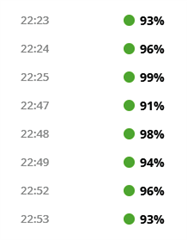I find the below situations on my instinct 2 solar:
When the the 'Pulse Ox Mode' is set to ’All Day‘,the displayed battery life is only 4 day。
When the the 'Pulse Ox Mode' is set to ’During Sleep‘,the displayed battery life is 11 day。
When the the 'Pulse Ox Mode' is set to ’Manual Check‘,the displayed battery life is 20+ day。
My question is that will the battery life performance be improved when the 'Pulse Ox Mode' set to ’All Day‘ in future firmware updates?4 day battery life is really a bit short for users.



